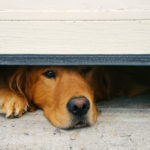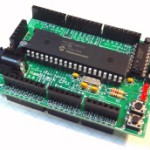Posts Tagged ‘Canada’
 Modern Amateur Radio Hobby – An Introduction
Modern Amateur Radio Hobby – An Introduction
This video is an introduction to an international public-service and technology hobby known as ‘amateur radio’ (or ‘ham radio’).
[embedyt] https://www.youtube.com/watch?v=K40HpIjDLRs[/embedyt]
Amateur radio (also called ham radio) describes the use of radio frequency spectrum for purposes of non-commercial exchange of messages, wireless experimentation, self-training, private recreation, radiosport, contesting, and emergency communication. The term “amateur” is used to specify “a duly-authorized person interested in radioelectric practice with a purely personal aim and without pecuniary interest;” (either direct monetary or other similar rewards) and to differentiate it from commercial broadcasting, public safety (such as police and fire), or professional two-way radio services (such as maritime, aviation, taxis, etc.).
The amateur radio service (amateur service and amateur-satellite service) is established by the International Telecommunication Union (ITU) through the Radio Regulations. National governments regulate technical and operational characteristics of transmissions and issue individual stations licenses with an identifying call sign. Prospective amateur operators are tested for their understanding of key concepts in electronics and the host government’s radio regulations. Radio amateurs use a variety of voice, text, image, and data communications modes and have access to frequency allocations throughout the RF spectrum to enable communication across a city, region, country, continent, the world, or even into space.
Amateur radio is officially represented and coordinated by the International Amateur Radio Union (IARU), which is organized in three regions and has as its members the national amateur radio societies which exist in most countries. According to an estimate made in 2011 by the American Radio Relay League, two million people throughout the world are regularly involved with amateur radio. About 830,000 amateur radio stations are located in IARU Region 2 (the Americas) followed by IARU Region 3 (South and East Asia and the Pacific Ocean) with about 750,000 stations. A significantly smaller number, about 400,000, are located in IARU Region 1 (Europe, Middle East, CIS, Africa).
Activities and practices
The expansive diversity found in the amateur radio hobby attracts practitioners who have a wide range of interests. Many hams begin with a fascination of radio communication and then combine other personal interests to make the pursuit of the hobby rewarding. Some of the focal areas amateurs pursue include radio contesting, radio propagation study, public service communication, technical experimentation, and computer networking. But, that is just a sampling of interest areas found in the hobby.
Amateur radio operators use various modes of transmission to communicate. The two most common modes for voice transmissions are frequency modulation (FM) and single sideband (SSB). The FM mode offers high-quality audio signals, while SSB is better at long distance communication when bandwidth is restricted.
Modern personal computers have encouraged the use of digital modes such as radioteletype (RTTY) which previously required cumbersome mechanical equipment. Hams led the development of packet radio in the 1970s, which has employed protocols such as AX.25 and TCP/IP. Specialized digital modes such as PSK31 allow real-time, low-power communications on the shortwave bands. More robust digital modes have been invented and improved, including such modes as Olivia, JT65, and WSPR.
NASA astronaut Col. Doug Wheelock, KF5BOC, Expedition 24 flight engineer, operates the NA1SS ham radio station in the Zvezda Service Module of the International Space Station. Equipment is a Kenwood TM-D700E transceiver.
Amateur radio operators, using battery- or generator-powered equipment, often provide essential communications services when regular channels are unavailable due to natural disasters or other disruptive events.
This video comes to us via Canada, and is used by permission from Bernard Bouchard – / ve2sms – The original video was published on Feb 28, 2013.- Website is https://www.ve2cwq.ca/amateur-radio-club-ve2cwq/
Voici maintenant, la version complète du documentaire «La radioamateur» d’une durée de 11 minutes. On y aborde toutes les activités sur le monde de la radioamateur. Ce vidéo a été produit par le Club Radioamateur VE2CWQ / Canwarn-Québec. Pour information: https://www.ve2cwq.ca/
Connect with me at https://NW7US.us
USA Amateur Radio information: http://ARRL.org
 How I Reunited Two Devils Brigade Canadian and American Veterans of World War Two
How I Reunited Two Devils Brigade Canadian and American Veterans of World War Two
In the 1990s while living in eastern Montana, I had the amazing experience of reuniting two soldiers that served in the Devil’s Brigade. They both trained near Helena, Montana.
One day, I was operating on the amateur radio shortwave Ten-Meter band, and a gentleman answered my, “CQ, CQ, CQ, this is N7PMS in Montana, Over”. I took notes of our conversation.
The next day, when again I called for any station to answer my call for a conversation, another fellow, from Canada, answered me. I learned something amazing: Both of these two men mentioned that, during World War Two, they both were in the same special forces unit, training near Helena, Montana.
One of these Veterans served in the Canadian Armed Forces, and the other in the American Armed Forces. Listen to my story, for the full details of this amazing experience I had as an amateur radio operator.
Jump to 3:22 if you wish to skip my introduction to the story, during which I give some background on when and so on:
https://youtu.be/YFMplHjxy6s?t=3m22s
This certainly was one of the most memorable moments in my amateur radio hobby experience! The joy of reuniting friends is good.
From https://en.wikipedia.org/wiki/First_Special_Service_Force:
The 1st Special Service Force (also called The Devil’s Brigade, The Black Devils, The Black Devils’ Brigade, and Freddie’s Freighters), was an elite American-Canadian commando unit in World War II, under command of the United States Fifth Army. The unit was organized in 1942 and trained at Fort William Henry Harrison near Helena, Montana in the United States. The Force served in the Aleutian Islands, and fought in Italy, and southern France before being disbanded in December 1944.
The modern American and Canadian special operations forces trace their heritage to this unit. In 2013, the United States Congress passed a bill to award the 1st Special Service Force the Congressional Gold Medal.
Thank you for watching, and sharing. Comments are welcome: do you have a memorable moment in your radio hobby experience on the air?
73 de NW7US
 LHS Episode #186: A Bad Case of CIFS
LHS Episode #186: A Bad Case of CIFS
 This is Episode #186 of Linux in the Ham Shack. In this episode, topics include driving while using your amateur radio in Canada, UHF regulations in The Netherlands, amateur radio testing, Samba, tickr, Arch Linux, GeckoLinux and a whole lot more. Thank you so much for listening. We appreciate each and every one of you.
This is Episode #186 of Linux in the Ham Shack. In this episode, topics include driving while using your amateur radio in Canada, UHF regulations in The Netherlands, amateur radio testing, Samba, tickr, Arch Linux, GeckoLinux and a whole lot more. Thank you so much for listening. We appreciate each and every one of you.
73 de The LHS Crew
 LHS Episode #170: Invasion of the Random Dog
LHS Episode #170: Invasion of the Random Dog
 It's our post-Hamvention episode and it's packed with great information. We start off with a look at hams in the news, special event stations for all Canadian operators, the legalities and procedures for proper third-party operation. Then we move into a comparison of Linux live update procedures and the latest news about Raspberry Pi Zero boards. Then we take a tour of the JT9 and JT65 digital modes using WSJT-X. And there's so much more. Thanks for listening!
It's our post-Hamvention episode and it's packed with great information. We start off with a look at hams in the news, special event stations for all Canadian operators, the legalities and procedures for proper third-party operation. Then we move into a comparison of Linux live update procedures and the latest news about Raspberry Pi Zero boards. Then we take a tour of the JT9 and JT65 digital modes using WSJT-X. And there's so much more. Thanks for listening!
73 de The LHS Crew
 LHS Episode #133: We’re Baaack!
LHS Episode #133: We’re Baaack!
 Hello again! Linux in the Ham Shack is back online after a three-month absence. Thank you all for sticking out our downtime with us. We’ve retooled the show a little bit, added some segments, and tightened up the format. But all the fun, information and Linux and hammy stuff remains! Looking forward to many more years of our show. Sit tight, strap in–we’re just getting started. Again.
Hello again! Linux in the Ham Shack is back online after a three-month absence. Thank you all for sticking out our downtime with us. We’ve retooled the show a little bit, added some segments, and tightened up the format. But all the fun, information and Linux and hammy stuff remains! Looking forward to many more years of our show. Sit tight, strap in–we’re just getting started. Again.
73 de The LHS Guys
 LHS Episode #105: Linux on the HamStack
LHS Episode #105: Linux on the HamStack
 That’s right, we’ve got yet another interview in this show. Is anyone screaming “UNCLE!” yet? George from Sierra Radio Systems and Nick from Pignology are our guests tonight, talking about several of their ham radio related products. They have a product launch they’re doing at the Dayton Hamvention this year and wanted to let everyone know what they have in store so it’s out there before the chaos in Ohio. Don’t despair, howver. This is not a sales pitch. Instead, our fine feathered guests get down into the nitty gritty of their product, explaining what it does, how it does it, what hardware it uses and what software as well. You’ll be happy to know it’s all Free Software based and an incredible find for anyone looking for comprehensive remote station control. George and Nick also happen to be responsible for a significant chunk of the donation money LHS needed to be a part of Dayton this year so we are eternally grateful to them for that. The best part of all this: That’s only HALF of the show. This one’s so packed full of information it might just explode.
That’s right, we’ve got yet another interview in this show. Is anyone screaming “UNCLE!” yet? George from Sierra Radio Systems and Nick from Pignology are our guests tonight, talking about several of their ham radio related products. They have a product launch they’re doing at the Dayton Hamvention this year and wanted to let everyone know what they have in store so it’s out there before the chaos in Ohio. Don’t despair, howver. This is not a sales pitch. Instead, our fine feathered guests get down into the nitty gritty of their product, explaining what it does, how it does it, what hardware it uses and what software as well. You’ll be happy to know it’s all Free Software based and an incredible find for anyone looking for comprehensive remote station control. George and Nick also happen to be responsible for a significant chunk of the donation money LHS needed to be a part of Dayton this year so we are eternally grateful to them for that. The best part of all this: That’s only HALF of the show. This one’s so packed full of information it might just explode.
73 de The LHS Guys
 LHS Episode #077: North of the Border
LHS Episode #077: North of the Border
 Today Linux in the Ham Shack is graced with the appearance of an additional co-host: Harrison, VE2HKW, an amateur radio operator from Canada and sometimes host of the Mintcast, a podcast for Linux users from members of the Linux Mint community.
Today Linux in the Ham Shack is graced with the appearance of an additional co-host: Harrison, VE2HKW, an amateur radio operator from Canada and sometimes host of the Mintcast, a podcast for Linux users from members of the Linux Mint community.
In the first segment, our hosts discuss three very useful Linux utilities for analyzing system performance on your desktop or server: iftop, ifstat and iotop. Get in-depth knowledge of how to use these tools in order to make your machine run better with fewer bottlenecks. And since Harrison is from a whole other country, it was decided he should tell all of us about amateur radio from a Canadian perspective, including licensing, regulations and operating practices.
Hamvention 2012 is coming up very soon. Please donate to the fund if you can. We hope to see everyone there!
73 de The LHS Guys (and Harrison, too)












